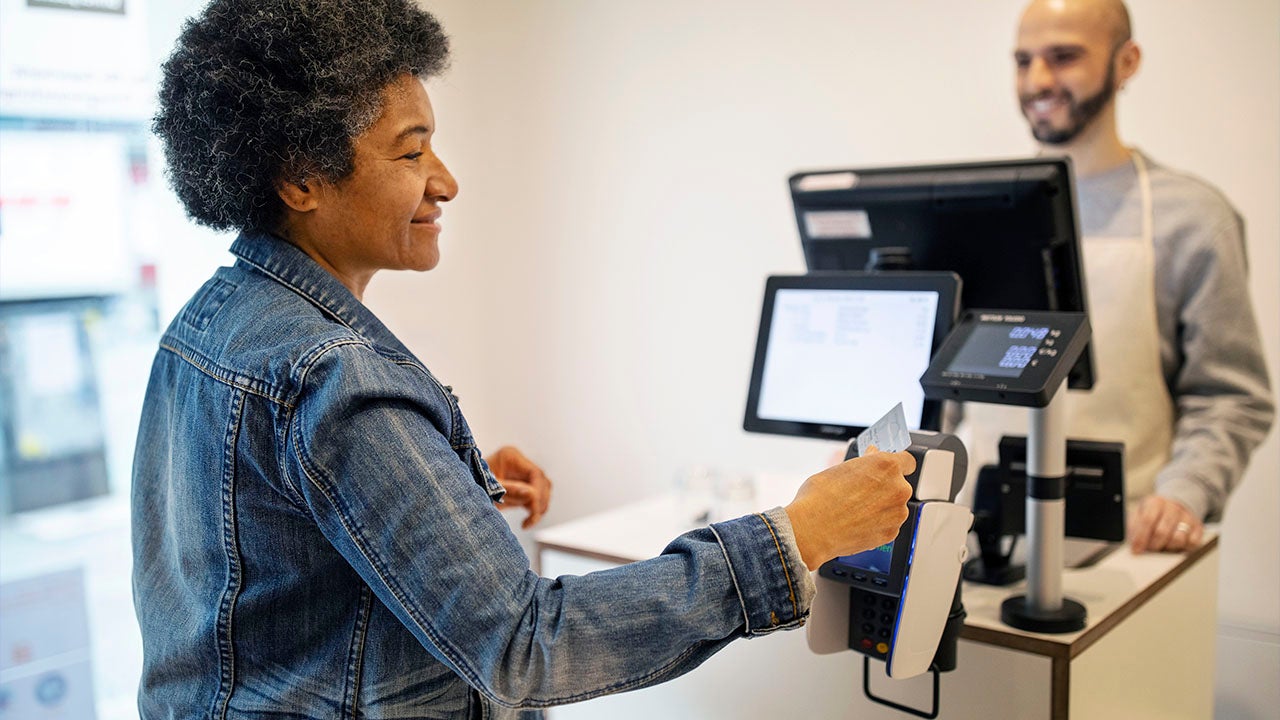6 reasons to quit your bank this Valentine’s Day

Most consumers in the U.S. have at least one bank account, and it’s likely that account has been with the same bank for more than a decade.
Nearly 96 percent of U.S. households have an account at a bank or credit union, according to a 2024 FDIC survey, and the average checking consumer has had a checking account with the same financial institution for 17 years, according to a Bankrate survey published in January 2023.
If you’re feeling like it’s time to move on, here are six things to consider when evaluating whether your banking relationship is still going strong.
1. Times have changed
Many U.S. consumers have had a banking relationship since before the iPhone made its debut in 2007. Since then, the iPhone (and smartphones, generally) has evolved, and so have banks. Some popular banks today didn’t even exist in 2007, and both online-only and traditional banks offer digital features and tools that make banking simpler and more convenient.
Bankrate’s take: Compare your bank with other financial institutions using Bankrate’s 2025 bank reviews and check out Bankrate’s best banks of 2025.
2. You’re not receiving a competitive yield
If you prefer the in-person services offered at a more traditional branch bank, you might be missing out on accounts that offer competitive interest rates. If, for example, you’re looking for a higher-yielding savings account outside your traditional bank, consider adding an account at an online-only bank that offers a higher rate to complement your branch bank.
Unfortunately, there are many Americans who would rather settle for the low rates on accounts offered by their traditional banks, be it for convenience or loyalty.
Online-only banks, however, can offer competitive rates on savings, certificates of deposit (CDs) and money market accounts because they don’t have the overhead costs of maintaining branches. Also, many online-only banks don’t have minimum balance requirements as traditional brick-and-mortar banks do.
What’s more, your funds will be safe if you choose an online bank that’s a member of the Federal Deposit Insurance Corp. (FDIC), provided your deposit is within FDIC insurance limits and guidelines.
Keep in mind: If you prefer paying in cash, make sure there’s at least one branch or in-network ATM nearby to make withdrawals from your online account.
3. The customer service at your bank isn’t right for you
Accessibility is important. Beyond branch or ATM locations, you’ll want a bank that you can easily get in touch with, if needed. If bank representatives are only available during the hours when you’re working — or you can’t reach anyone on the weekend — maybe it’s time to move to a different bank or credit union.
If you’re looking for a bank that offers 24/7 customer service with live representatives, you have options. For instance, Ally Bank has 24/7 customer service and posts its phone wait time online. Some banks also have options to chat with customer service representatives online to get your questions answered.
4. The bank doesn’t have the products you want
Some banks have all the features and products you want. Other times, it might make sense to have at least two bank relationships. For instance, a checking account at the bank down the street and a high-yield savings account at an online bank might be a good combination.
Just be certain you’re able to get the monthly maintenance fee on those accounts waived. Also, make sure your accounts have the features that you like to use. For example, you might want the ability to turn your debit card on or off, or deposit checks using your phone.
Money tip: Think twice before closing out your credit cards. If you’ve had a credit card for a significant amount of time, closing the account could negatively impact your score. The length of your credit history accounts for 15% of your FICO score.
5. You don’t like the mobile bank app
Savvy consumers are looking for banks with a laundry list of features, like person-to-person payments, online bill pay and digital budgeting tools.
A mobile banking app can make managing your money simpler and even eliminate calls to customer service or trips to your local branch.
Depending on what your financial goals are, you could benefit from an institution with a virtual assistant that can identify problem areas (such as Erica at Bank of America or the U.S. Bank Smart Assistant) and help you get your finances on track.
6. Fees are costing you
Finding a free checking account these days is easy. Bankrate’s 2024 checking account and ATM fee study found that almost half (47 percent) of noninterest checking accounts are free.
Getting hit with one fee is probably not a good reason to switch banks, but if you find yourself spending hundreds of dollars a year on overdraft and ATM charges, you may need to take a look at a different bank.
Out-of-network ATM fees can also be costly. A solution could be either to open an account at a bank with ATMs nearby or to open an account where the bank will reimburse ATM fees or to have an account at a bank that supports a large ATM network.
It might pay to seek out a new banking relationship
If you decide to change your bank relationship, look for a payout. Some financial institutions will pay you to open an account at their bank through a bank account bonus.
These bonuses are usually for new customers. Just because you open a new account doesn’t mean you necessarily have to switch to that bank for all of your money needs. But the bank may require a direct deposit or have other requirements. So just make sure you won’t incur any fees that outweigh this new bonus. Also, make sure the bonus isn’t costing you a higher annual percentage yield (APY) that you could be earning at another bank.
Don’t be afraid to switch
Many bank customers are hesitant to switch banks in part because it seems complicated. For instance, you’ve set up online bill pay and you have multiple automatic payments made throughout the month at your bank. Unlinking all of your accounts could take some time and a lot of effort. The lesson here: Don’t get locked into a relationship of convenience with your bank. Learn how to switch to a different bank that will help you reach your financial goals.
And, if you’re concerned about forgetting a scheduled payment, leave your old account open until you’ve fully transferred everything to your new one.
“Make sure all transactions have cleared before switching,” says Paul Golden, managing director for the National Endowment for Financial Education.
Bottom line
There are many perks to changing banks. You could earn more interest, pay fewer fees or have access to better digital products and customer service. However, change can be difficult. Few people are willing to make the time to switch accounts.
Weigh the pros and cons and consider how you could benefit from entering a new banking relationship. Do your research and compare accounts depending on what matters most to you. Don’t close your old account until you’ve double-checked and made sure that direct deposit and bill payments and recurring charges are connected to your new checking account.
Also, consider whether it’s worth it to keep some ties to your former institution. Closing a credit card, for instance, could be a bad idea.






